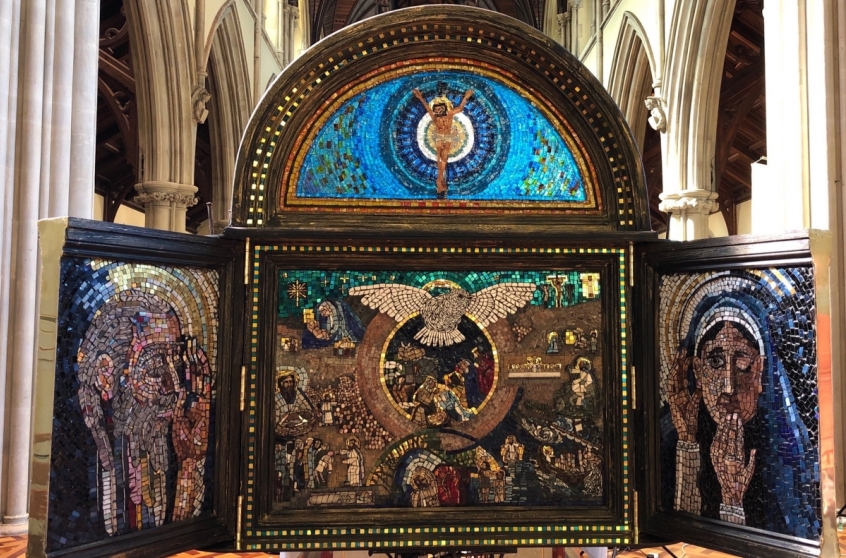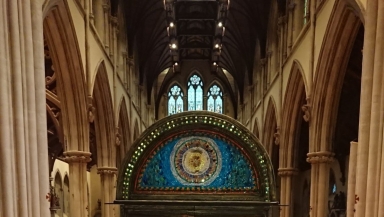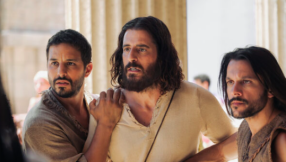
A stunning new artwork has been unveiled to mark 1,600 years since the death of St Jerome.
The mosaic stands at over two metres tall and comprises 10 panels containing thousands of pieces of coloured glass that have been formed into a striking piece of art by using the smalti mosaic technique developed in ancient Byzantium.
It is currently housed in St John's Catholic Cathedral, Portsmouth, ahead of a tour of England and Wales to commence next year.
The artwork commemorates the anniversary of the death of Jerome on 30 September. Jerome lived from 347 AD to 420 AD and during his lifetime, became the first scholar to systematically translate the Bible from the original Hebrew, Aramaic and Greek into Latin.
Known as the Vulgate, it became the standard biblical text of the Roman Catholic Church and is still in use today.
The commemorative mosaic was sponsored by the Bible Society and the Catholic Church in England and Wales as part of their joint initiative, The God Who Speaks, which was launched to encourage Catholics to engage more with the Bible.

The mosaic shows the symbols traditionally associated with Jerome, like a lion, book and skull, but in a reflection of his enduring legacy into the digital age, it also depicts the scholar on a laptop.
Portsmouth-based artist Pete Codling, who created the mosaic, explained: "In this contemporary mosaic the book pages on his desk blend into a computer keyboard and his stylised quill pen, or stylus, remind the viewer that Bible reading, learning and studying also now take place online via the internet.
"The Bible speaks now through the digital as well as the printed text."
The mosaic weaves in representations of Jesus, Mary and St Matthew, but in another modern reflection also shows three-year-old Syrian refugee boy Alan Kurdi, who was found drowned on a Turkish beach in 2015 after his family tried to travel by boat to Greece.
"The idea behind this artwork has challenged me technically as well as artistically," Codling continued.
"My research for this artwork took me to Ravenna and Venice in search of materials, technique and craftmanship.
"I wanted to portray the Bible visually, and convey the journey of translation from the oral tradition to the digital age in one coherent artwork."













